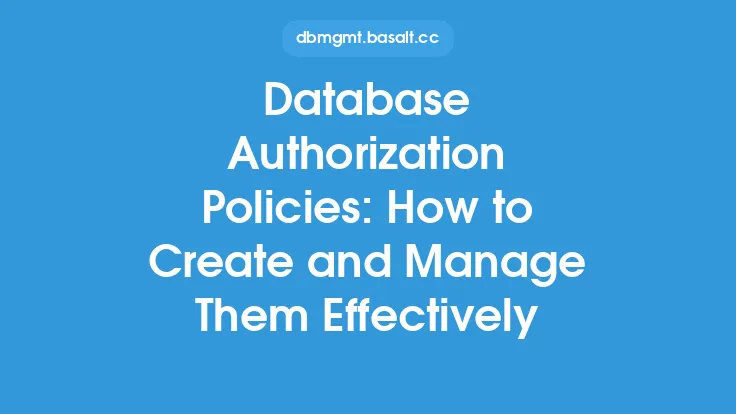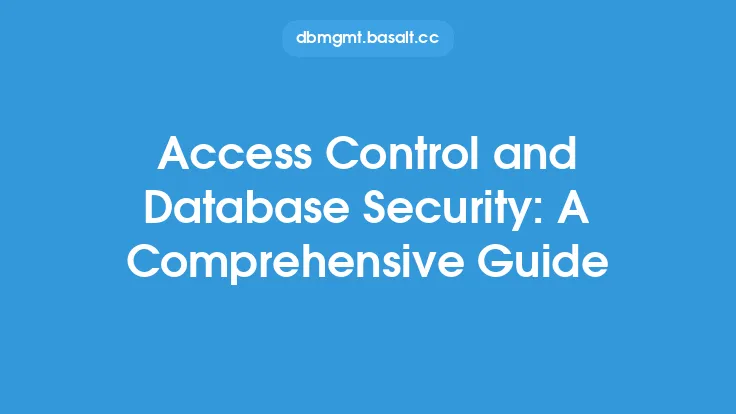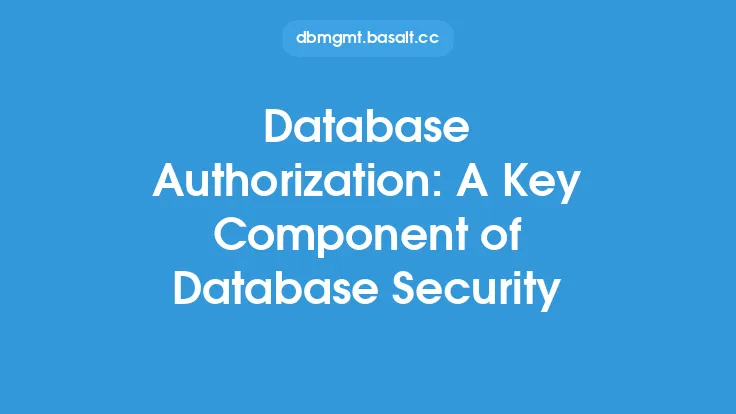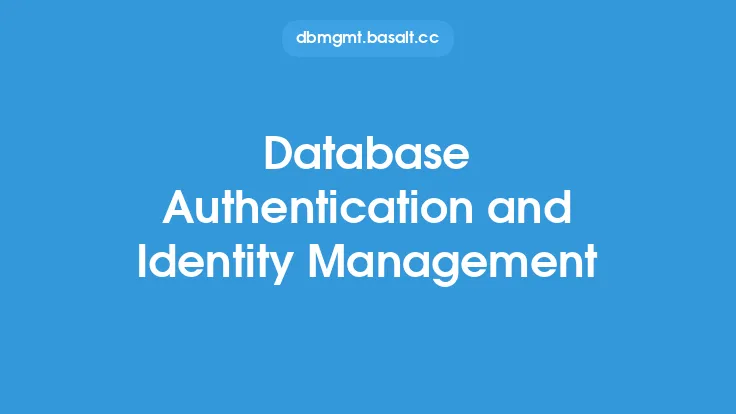Database authorization and privilege management are critical components of database security, ensuring that only authorized users and applications can access and manipulate sensitive data. In this article, we will delve into the intricacies of database authorization and privilege management, exploring the concepts, techniques, and best practices that underpin this essential aspect of database security.
Introduction to Database Authorization
Database authorization refers to the process of granting or denying access to database resources, such as tables, views, and stored procedures, based on a user's identity, role, or privileges. It is a crucial aspect of database security, as it helps prevent unauthorized access, data breaches, and other security threats. Database authorization involves evaluating a user's credentials, such as their username, password, and role, to determine their level of access to database resources.
Privilege Management
Privilege management is a critical aspect of database authorization, as it involves granting and revoking privileges to users and roles. Privileges define the actions that a user or role can perform on a database resource, such as selecting, inserting, updating, or deleting data. There are several types of privileges, including:
- System privileges: These privileges grant access to system-level resources, such as the ability to create or drop databases, tables, or users.
- Object privileges: These privileges grant access to specific database objects, such as tables, views, or stored procedures.
- Row-level privileges: These privileges grant access to specific rows within a table, based on conditions such as the user's identity or role.
Authorization Models
There are several authorization models that can be used to manage access to database resources, including:
- Discretionary Access Control (DAC): This model grants access to database resources based on a user's identity and privileges.
- Mandatory Access Control (MAC): This model grants access to database resources based on a user's role and privileges, as well as the sensitivity level of the data.
- Role-Based Access Control (RBAC): This model grants access to database resources based on a user's role and privileges.
Privilege Escalation and Revocation
Privilege escalation occurs when a user or role is granted additional privileges, potentially allowing them to access sensitive data or perform unauthorized actions. Privilege revocation, on the other hand, involves revoking privileges from a user or role, potentially limiting their access to database resources. It is essential to carefully manage privilege escalation and revocation to prevent security threats and ensure that users and roles have only the necessary privileges to perform their tasks.
Database Authorization Techniques
There are several database authorization techniques that can be used to manage access to database resources, including:
- SQL grants: These involve using SQL statements to grant privileges to users and roles.
- Role-based access control: This involves assigning roles to users and granting privileges to those roles.
- Attribute-based access control: This involves granting access to database resources based on a user's attributes, such as their department or job function.
- Label-based access control: This involves assigning labels to database resources and granting access to users and roles based on those labels.
Auditing and Monitoring
Auditing and monitoring are critical aspects of database authorization and privilege management, as they help detect and prevent security threats. Database administrators should regularly audit and monitor database activity, including login attempts, privilege grants and revocations, and data access. This can be achieved using various tools and techniques, such as:
- SQL auditing: This involves tracking and analyzing SQL statements executed on the database.
- System logging: This involves tracking and analyzing system-level events, such as login attempts and privilege grants.
- Database monitoring: This involves tracking and analyzing database performance and activity, including data access and privilege usage.
Best Practices
To ensure effective database authorization and privilege management, database administrators should follow several best practices, including:
- Least privilege principle: This involves granting users and roles only the necessary privileges to perform their tasks.
- Separation of duties: This involves dividing tasks and privileges among multiple users and roles to prevent a single user or role from having too much power.
- Regular auditing and monitoring: This involves regularly auditing and monitoring database activity to detect and prevent security threats.
- Secure password management: This involves using secure password management practices, such as password encryption and rotation, to prevent unauthorized access.
Conclusion
Database authorization and privilege management are critical components of database security, ensuring that only authorized users and applications can access and manipulate sensitive data. By understanding the concepts, techniques, and best practices outlined in this article, database administrators can effectively manage access to database resources, prevent security threats, and ensure the confidentiality, integrity, and availability of sensitive data.





